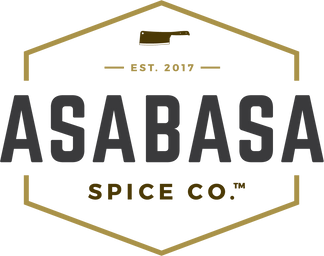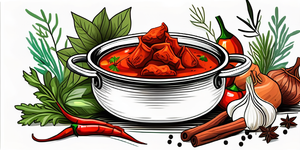The Fascinating History of Tikka Masala
Tikka Masala has become one of the most beloved and popular dishes around the world. Its rich and flavorful sauce, combined with tender grilled chicken or paneer, has made it a staple in Indian restaurants everywhere. But have you ever wondered about the origins and evolution of this mouthwatering dish? In this article, we will delve into the fascinating history of Tikka Masala, exploring its cultural significance and its journey from the Indian subcontinent to international fame.
Origins of Tikka Masala
The story of Tikka Masala can be traced back to the Indian subcontinent where the flavors of spices and curries have been a part of the culinary tradition for centuries. However, the exact origins of Tikka Masala are a subject of debate.
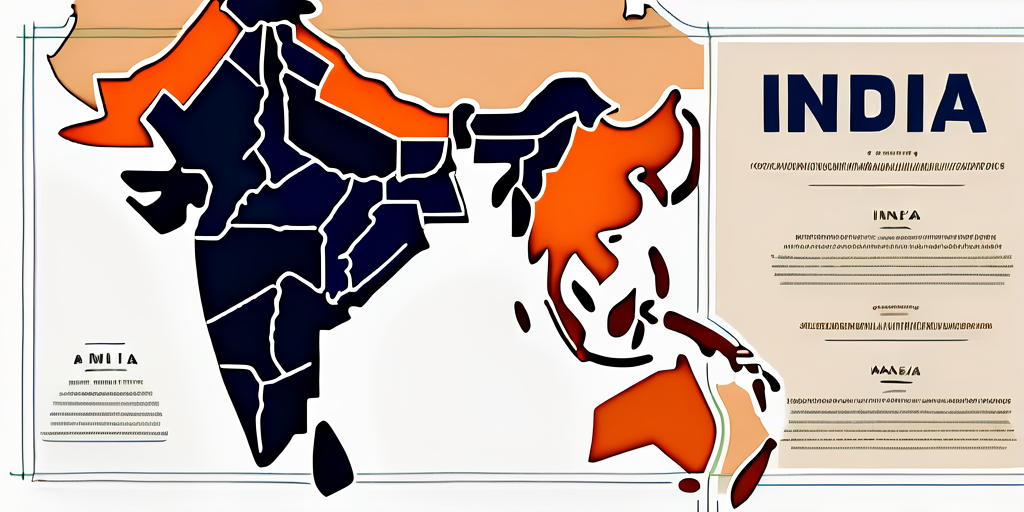
The Indian Subcontinent Influence
Many believe that Tikka Masala has its roots in the northern region of India, particularly Punjab. The dish likely evolved from the traditional tandoori cooking style, where marinated meat is grilled in a clay oven called a tandoor. The combination of these grilled meats with a creamy tomato-based sauce gave birth to Tikka Masala.
The tandoor, a traditional clay oven, has been used in the Indian subcontinent for centuries. It is believed to have originated in the Indus Valley civilization, dating back to 2600 BCE. The tandoor is not only used for cooking but also for baking bread, such as naan. The intense heat of the tandoor gives the meat a smoky flavor and a slightly charred exterior, adding depth to the dish.
Punjab, known as the land of five rivers, has a rich culinary heritage. It is famous for its robust and flavorful dishes, with tikka being one of its specialties. Tikka refers to small pieces of marinated meat, usually chicken or lamb, which are skewered and cooked in the tandoor. The marinade typically includes a blend of spices, yogurt, and lemon juice, giving the meat a tangy and aromatic flavor.
The creamy tomato-based sauce that accompanies the tikka is another essential component of Tikka Masala. Tomatoes, a staple in Indian cuisine, are cooked down with onions, garlic, ginger, and a medley of spices to create a rich and velvety sauce. The addition of cream or yogurt adds a lusciousness to the dish, balancing the heat from the spices and providing a smooth texture.
British Colonial Impact
Another theory suggests that Tikka Masala was actually born in the kitchens of British curry houses. During the British colonial period in India, traditional Indian dishes were modified to suit the British palate. It is said that Tikka Masala was invented when a British chef added tomato soup to a tandoori spiced chicken dish, creating a milder and creamier version of the original recipe.
The British presence in India had a profound influence on Indian cuisine. The British brought with them ingredients like tomatoes, which were not native to the Indian subcontinent. These ingredients were incorporated into Indian dishes, creating new and unique flavors. The addition of tomato soup to the tandoori spiced chicken dish not only added a tangy sweetness but also helped to mellow down the intense heat of the spices, making it more palatable to the British taste buds.
Curry houses, which catered to the British soldiers and officials, became popular during the colonial era. These establishments served Indian-inspired dishes that were adapted to suit the British palate. Tikka Masala, with its creamy and mildly spiced tomato-based sauce, became a favorite among the British patrons. Its popularity spread beyond the curry houses, and it soon became a staple in British Indian cuisine.
Regardless of its origins, Tikka Masala has become a beloved dish around the world. Its combination of smoky grilled meat and creamy tomato sauce, infused with a blend of aromatic spices, creates a harmonious and satisfying flavor profile. Whether enjoyed in the bustling streets of Punjab or in the cozy ambiance of a British curry house, Tikka Masala continues to captivate taste buds and tell the story of culinary fusion.
Evolution of Tikka Masala Recipe
Over the years, Tikka Masala has evolved and adapted to different tastes and preferences. Let's explore the traditional ingredients and preparation methods that have stood the test of time, as well as the modern variations and adaptations that have added new dimensions to this delectable dish.
Traditional Ingredients and Preparation
In its traditional form, Tikka Masala consists of marinated chicken or paneer, which is then grilled to perfection in a tandoor. The marination process involves a combination of yogurt and a special blend of spices, including cumin, coriander, turmeric, and garam masala. The grilled meat or paneer is then simmered in a luscious sauce made from tomatoes, onions, ginger, and garlic, along with a generous splash of cream.
This classic Tikka Masala recipe showcases the bold flavors of Indian spices, with the creamy sauce balancing the spiciness and adding a luxurious texture to the dish.
Modern Variations and Adaptations
As Tikka Masala gained popularity globally, chefs and home cooks began to experiment with different ingredients and flavors, resulting in a myriad of modern variations and adaptations.
Vegetarian versions of Tikka Masala emerged, substituting the meat with vegetables like cauliflower or tofu, making it accessible to a wider audience. Additionally, some chefs started adding a twist to the recipe by incorporating ingredients such as coconut milk, almonds, or even fruits like mango to give a unique and tropical twist to the dish.
The versatility of Tikka Masala allows it to be customized to suit various dietary preferences, making it a favorite among vegetarians, vegans, and those with gluten-free diets.
Tikka Masala's Global Popularity
The global popularity of Tikka Masala is undeniable. The dish has transcended borders, becoming a symbol of the rich and diverse culinary landscape of the Indian subcontinent. Let's take a closer look at how Tikka Masala has made its mark in the United Kingdom and the United States.
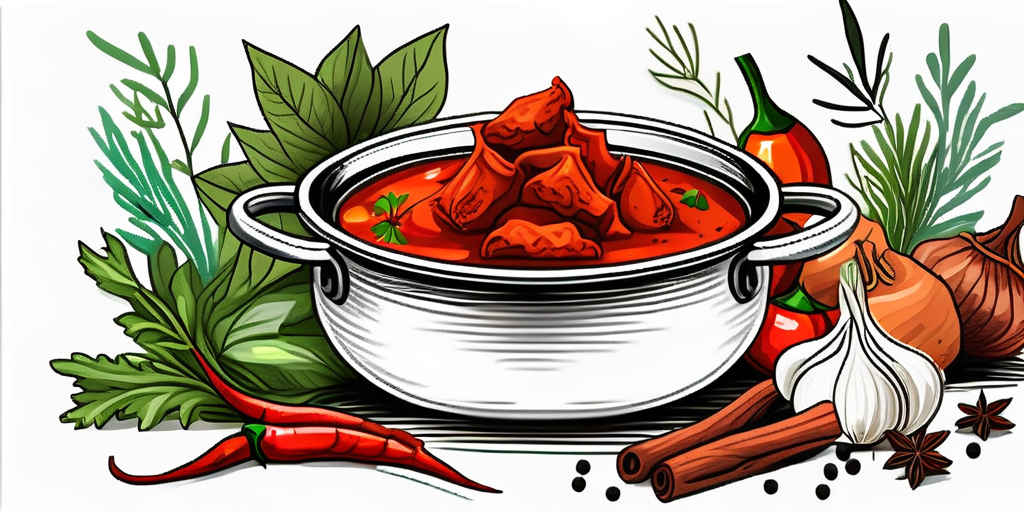
Tikka Masala in the UK
It is no secret that the United Kingdom has a special affinity for Indian cuisine, with numerous Indian restaurants and takeaways dotting the country. In fact, Tikka Masala is often referred to as the national dish of the UK. Its rise to prominence in the UK can be traced back to the 1960s when a large number of immigrants from the Indian subcontinent settled in Britain, bringing their culinary traditions with them. Today, Tikka Masala remains a firm favorite among Britons of all backgrounds.
Tikka Masala in the United States
Across the Atlantic, Tikka Masala has also found its way into the hearts and palates of Americans. As the US became more culturally diverse, Indian cuisine gained popularity, and Tikka Masala, with its rich flavors and creamy sauce, captured the American taste buds. Indian restaurants can now be found in nearly every major American city, offering a wide range of dishes, with Tikka Masala being a consistent crowd-pleaser.
Cultural Significance of Tikka Masala
Beyond its culinary appeal, Tikka Masala holds a significant place in multiculturalism and culinary diplomacy, highlighting the power of food in bridging cultures and fostering understanding.
Tikka Masala as a Symbol of Multiculturalism
Tikka Masala's origins and its journey around the world reflect the interconnectedness of cultures. It represents the fusion of Indian and British cuisines, demonstrating how culinary traditions can blend and evolve when different cultures come together. In countries like the UK and the US, Tikka Masala has become a symbol of multiculturalism and inclusivity, celebrating diversity and unity.
The Dish's Role in Culinary Diplomacy
Food has always been a powerful tool in diplomacy, and Tikka Masala is no exception. In 2001, then-British Foreign Secretary Robin Cook even declared Tikka Masala as a British national dish, stating that it exemplifies the diverse and inclusive nature of British society. The dish continues to play a role in diplomatic events, showcasing the strong cultural ties between countries and promoting understanding through shared culinary experiences.
The Future of Tikka Masala
As we look to the future, Tikka Masala is poised to continue captivating taste buds and evolving with new trends and innovations.
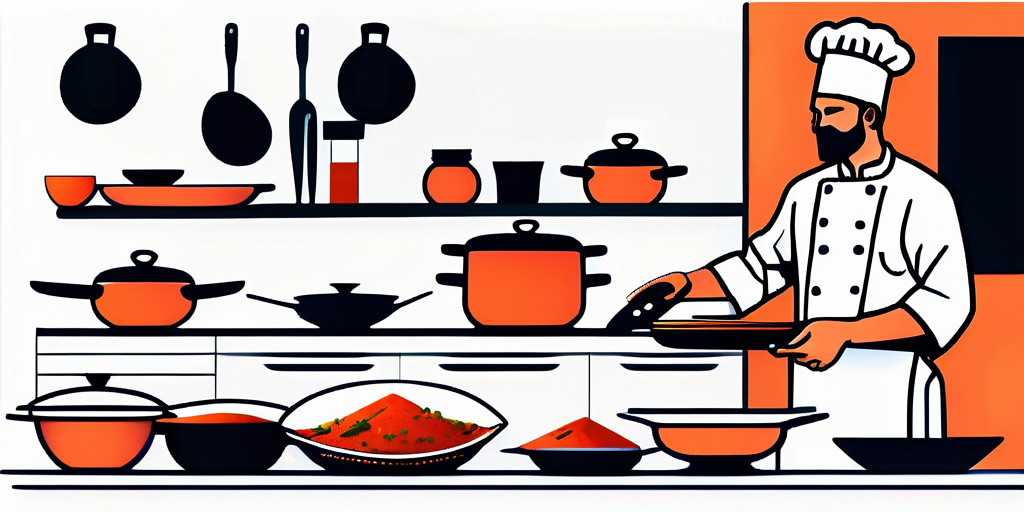
Fusion Trends and Innovations
Chefs and food enthusiasts are constantly pushing the boundaries of culinary creativity. This has led to the emergence of fusion cuisines, where different culinary traditions are combined to create exciting new dishes. Tikka Masala has not been left behind in this wave of innovation. We can expect to see new and exciting variations of Tikka Masala that incorporate elements from other cuisines, resulting in a fusion of flavors that tantalize the palate.
Sustainability and Health Considerations
With the growing focus on sustainability and health-conscious choices, Tikka Masala has the potential to adapt to these changing demands. Chefs and home cooks may explore using locally sourced ingredients, organic produce, and healthier cooking techniques while still retaining the essence of the dish. By incorporating these considerations, Tikka Masala can continue to delight diners while aligning with their evolving values.
In conclusion, the fascinating history of Tikka Masala highlights its journey from the Indian subcontinent to becoming a global sensation. Whether you are savoring this delectable dish in an Indian restaurant in London or cooking it up at home in New York, Tikka Masala is a culinary masterpiece that bridges cultures, celebrates diversity, and satisfies both the stomach and the soul.
